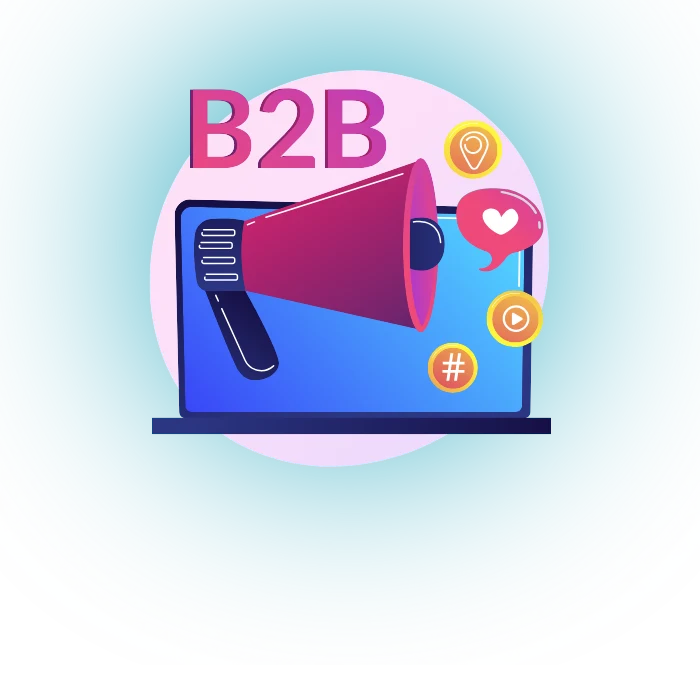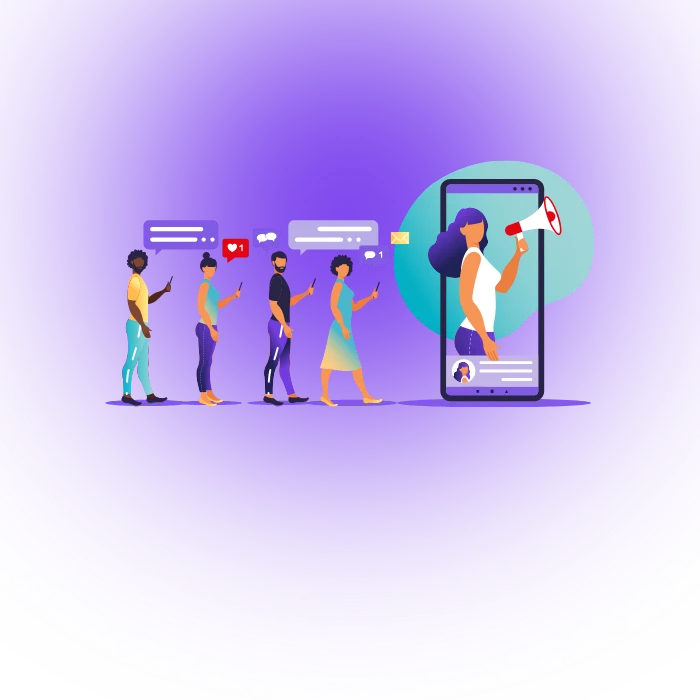Introduction
Social media has become an integral part of marketing for brands of all sizes. With billions of active users across platforms like Facebook, Instagram, Twitter, LinkedIn, and more, social media offers an unparalleled opportunity for brands to build awareness, connect with customers, drive sales, and promote their products and services.
In this comprehensive guide, we will explore proven social media marketing strategies and tactics to effectively promote your brand, engage your target audience, and achieve your business goals.
Building Your Brand Identity and Presence Online
The first step is establishing your brand’s identity and presence on relevant social media platforms. This includes:
Creating branded social media profiles and accounts across platforms like Facebook, Instagram, Twitter, LinkedIn, Pinterest, YouTube, etc.
Ensuring brand consistency in profile images, cover photos, bios, messaging, and visual branding assets across accounts
They are optimizing social media profiles for search visibility by including relevant keywords, location information, etc.
Setting up Facebook business pages and Instagram business profiles for additional professional features
Linking your profiles and enabling cross-posting across platforms
Getting your branding right from the start will lend credibility, improve discoverability, and allow you to shape how your brand is perceived online.
Identifying and Understanding Your Target Audience
The key to effective social media marketing for your brand is understanding your target audience/buyer persona intimately. Important factors to research:
Demographic data: age, gender, income level, location, etc
Behavioral data: where do they spend time online, what content do they interact with, what platforms and communities are they actively part of
Psychographic data: values, priorities, interests, and beliefs
What motivates them and what pain points can your brand solve
Understanding your audience will allow you to create resonant messaging and content tailored to their preferences. It will also guide your choice of platforms, and engagement strategies and help assess performance.
Creating Engaging and Shareable Content
Content serves as the lifeblood of your social media marketing. Well-planned and high-quality owned content allows you to shape the brand narrative, retain user attention amidst information overload, and drive engagement for sustained growth. Tactics include:
Blog posts and articles that provide value to your audience
Creative and short-form visual content like images, illustrations, infographics
Videos ranging from interrupting short-form video ads to long-form YouTube video content
Interactive content like polls, surveys, quizzes, etc & user-generated content from competitions and hashtags
Ideally, focus on a content mix spanning multiple formats including blogs, videos, etc. Make content creation efficient by repurposing content across text, graphics, and videos and tailoring it for different platforms.
Leveraging Influencer Marketing
Influencer marketing has proven to be a highly effective social media marketing tactic for brands. Industry experts, thought leaders, and rising stars across niches can help amplify your brand message and credibility.
Identify relevant influencers in your industry with engaged audiences
Onboard influencers that align with your brand ethos for sponsored content partnerships
Send them free products to feature in reviews and product unboxings on YouTube or blogs
Compensate top influencers to post about your brand across their social media
Reach out to micro-influencers with smaller but more engaged niches for promotions
Executing a Hashtag Campaign to Boost Brand Awareness
Hashtag campaigns when executed well can help raise awareness about your brand and increase user-generated content. Some examples include:
Product Launch hashtag campaigns: Create a unique hashtag for the launch, spread awareness about it, and ask followers, and influencers to post their thoughts, and product images using your hashtag
Contest hashtag campaigns: Run an exciting contest prompting users to create branded social content for it using your hashtag with influencer cross-promotion.
Festival hashtag campaigns: Align special branded hashtags with festivals like Diwali offers or Christmas specials for greater visibility.
Social Media Analytics for Measuring Success
Measuring the metrics that matter is vital for assessing how successful your social media marketing efforts are. Important metrics include:
Brand awareness using metrics like hashtag impression volume, hashtag reach, increase in @mentions
Engagement metrics like Likes, Shares, Comments, and engagement rates measure how well your content resonates
Growth metrics like follower count growth rate across channels
Web traffic metrics tracking how many clicks social content gets to your website
Lead generation metrics like Facebook lead forms, conversion to sales
Set measurable targets for each metric category tailored to your objectives whether launching a product or boosting revenue. Track them constantly to make data-informed improvements.
Sustaining Engagement Through Paid Social Advertising
While organic content drives initial reach and engagement, paid social advertisements can help you expand at scale. Options include:
Facebook and Instagram ads: Run video views, conversion and traffic-driving campaigns
LinkedIn Sponsored Updates and Text Ads for B2B lead generation
Pinterest product showcase and collection ads
YouTube pre-roll and bumper ads for mass video reach
Allocate monthly advertising budgets split testing different audience segments, creatives, and messaging for an optimal return on ad spend. Retargeting engaged visitors also works well.
Leveraging the Viral Potential of Social Platforms
Certain social platforms like YouTube, Facebook, and Instagram boast features or content formats primed for going viral rapidly. Leverage them in your marketing for maximum impact by:
Posting Short Funny Shareable Videos tailored for the Facebook and Instagram video algorithm
Launching Hashtag Challenges inviting User Generated Video Content on Instagram and TikTok
Creating surprising Ads for YouTube’s TrueView formats primed for virality
Optimizing Social Media Profiles and Bios for Discoverability
With so much competition for audience attention on social media, optimizing your profiles and bios can help people discover your brand organically. Tactics include:
Including important keywords and phrases that describe your brand offering in profile bios across channels
Adding location information like city and country to help local audiences find you
Using consistent and recognizable profile images and cover photos across channels so brand assets reinforce each other
Pinning key content like popular videos, website links, lead generation forms, etc to stay top-of-mind
Adding clickable website and contact details to facilitate conversions
Tagging location for local visibility and foot traffic
Curating Your Website Content for Social Media Visitors
While social platforms help discovery, your website offers opportunities to nurture visitors into customers. To facilitate this:
Ensure website pages achieve high scores on page speed and mobile-friendliness checks for visitor retention
Add social media follow buttons prominently throughout the site to continue engagement
Feature web visitor retargeting ad pixels to create custom audiences for ads
Publish “hero content” like guides, ebooks, and other gated resources in exchange for lead generation
Curate products/services clearly with buy buttons, and calls-to-action to convert visitors
Coordinating Paid Ads Across Search, Display, and Social
To maximize ROI on paid media:
Use Google Analytics campaign tracking UTM codes to measure website conversions specific to channels
Build custom audiences off high-converting website visitors, video viewers, and lead form fillers for remarketing
Ensure messaging consistency across platforms while tailoring to native ad formats
Set daily budget caps then use A/B testing to identify and scale best-performing copy and creatives
Emerging Social Media Platforms to Explore
While incumbents like Facebook and Instagram work very well for social strategies, keep exploring emerging challengers as they gain traction among younger demographics. Options to test include:
Chinese platforms like TikTok with engaging short video content possibilities
Visual platforms like Pinterest and Snapchat pioneering unique AR experiences
Audio-focused platforms like Twitter Spaces, and Clubhouse for voice-based community engagement
Messaging platforms like WhatsApp Business, and Telegram for personalized outreach
Testing new networks with potential early allows maximum time to optimize and scale communities in sync with platform growth. The key is staying agile, and data-informed while leveraging social media marketing best practices.
Leveraging Shoppable Posts and Features
With social media now influencing over 70% of purchase decisions, platforms are introducing shoppable features to drive conversions directly:
Instagram and Facebook Shops: Set up an online storefront showcasing product catalogs easily purchasable within apps
Shoppable posts: Tag products from the brand store in organic and paid posts enabling one-click purchases
Product showcases on Pinterest, YouTube, and TikTok using product pins, shoppable video ads
IG Checkout for simplified purchasing without leaving the app after product discovery
These features remove friction from the buying journey. Track sales and LTV from customers acquired via shoppable social content.
Geofencing Locations for Contextual Promotions
Geofencing involves creating virtual geographic boundaries around locations like stores. When social media users enter these perimeters, targeted ads and messages can be triggered contextually. Uses include:
Driving foot traffic to brick-and-mortar stores from nearby audiences
Promoting events, festivals, and pop-up shops tied to specific venues
Crafting custom audiences for future retargeting
Location-based email or SMS signup list building
Measure store visit conversions lifted by location-targeted social media ads optimized based on geography, demographics, and past purchase behaviors.
Evaluating Audience Sentiment Analysis and Metrics
Modern social media analytics provide rich audience listening and competitive intelligence:
Sentiment analysis of brand mentions gauging positive/negative perception over time
Review analyses measuring product satisfaction scores
Demographic and interest analytics identify who engages you most
Traffic sources analyzing referral channels beyond social posts
Engagement visualization mapping best content across platforms
Study analytics not just for vanity metrics but for strategic customer and content insights that fuel expansion.
Conclusion
By implementing the above social media marketing best practices combining organic community-building and paid advertising, you can elevate your brand, drive real business impact, and future-proof your strategy. Stay up to date on emerging platforms and innovations while tailoring efforts to your objectives and audience for success.
FAQs
What is a brand strategy?
Brand strategy is long term plan that defines how business builds recognition, trust and loyalty through consistent messaging, visuals and customer experiences.
Strong brand strategy guides marketing efforts, boosts awareness and drives growth across social media and other platforms
How can social media be used to build a brand?
Social media can used heavily to build a brand by sharing consistent content and engaging with your audience. Effective social media branding increases visibility, strengthens trust and fosters long-term customer loyalty.
What do you mean by brand building strategy?
Brand building strategy is planned approach to create and strengthen your brand identity, reputation, and awareness. It involves defining brand values, crafting consistent messaging and engaging audiences, helping build recognition, trust and long-term customer loyalty.
Why is brand strategy important?
Brand strategy is important because it defines your brand identity, differentiates you from competitors and guides consistent messaging across channels.
What is difference between Brand Strategy and Brand Idendity?
Brand strategy defines your long-term plan, goals and messaging to build recognition and loyalty.
Brand identity is the visual and verbal expression of your brand, including logo, colors, fonts and tone.
How Brand strategy differ from marketing strategy?
Brand strategy focuses on defining your brands identity, values and long-term positioning.
Marketing strategy primarlily focus on promoting products or services, driving sales and achieving short-term business goals.
How much does it cost to build brand?
Cost to build a brand varies widely, typically ranging from $5,000 to $50,000 or more, depending on factors like logo design, website, content creation, social media marketing, and campaigns. Building a brand is continuous process It is not one time task.
How long it takes to build reputable brand?
Building reputable brand typically takes 1 to 3 years, depending on consistency, quality of content, audience engagement and marketing efforts.
Strong brand requires ongoing effort to earn trust, recognition, and loyalty over time.
What is the 5 5 5 rule for social media?
The 5-5-5 rule for social media means sharing 5 posts from others, creating 5 original posts, and engaging with 5 followers daily.






